Steven Lyle Jordan's Blog, page 31
March 26, 2015
Bring the Future
The worst thing we can do is turn away the Future because it is uncomfortable. We need to look the uncomfortable parts of the Future right in the eyes. How else will we make it better?
Parts of the Future will be uncomfortable. Only accepting and directly addressing that will lessen discomfort. We can no longer afford to hold the Future at bay.
���
#BringTheFuture���.

March 25, 2015
Humans as AI’s pets? …Okay.
“Like people including Stephen Hawking and Elon Musk have predicted, I agree that the future is scary and very bad for people. If we build these devices to take care of everything for us, eventually they’ll think faster than us and they’ll get rid of the slow humans to run companies more efficiently.”
 So spoke Apple co-founder Steve Wozniak in an interview with the Australian Financial Review. And he’s not alone.�� It seems everyone from renowned scientists to prominent science fiction authors to SF moviemakers all believe that the “robopocalypse” is nigh, and it spells doom for the human race.�� Though maybe it’s significant that we haven’t heard the same from programmers or psychologists over the years… because, so far, no one has managed to come up with a compelling reason why AI would want (or even need) to take over the world… as I’ve said myself in the past.
So spoke Apple co-founder Steve Wozniak in an interview with the Australian Financial Review. And he’s not alone.�� It seems everyone from renowned scientists to prominent science fiction authors to SF moviemakers all believe that the “robopocalypse” is nigh, and it spells doom for the human race.�� Though maybe it’s significant that we haven’t heard the same from programmers or psychologists over the years… because, so far, no one has managed to come up with a compelling reason why AI would want (or even need) to take over the world… as I’ve said myself in the past.
Regardless, I’d like to address the other half of that comment for the moment: The idea that humans, once the AIs take over, would subjugate us or just plain wipe us out.�� Wozniak himself described humans post-robopocalypse as the “pets” of computers… and implied that that was a bad thing.�� I strongly challenge that idea.
First, think back a few hundred thousand years, to the age when our ancestors were learning to hunt, farm and develop a proto-society.�� They were making slow but sure progress, but due to some aspects of human physiology, they were not the best at certain tasks for which their lives depended, like fending off much larger predators, chasing down fast prey, or guarding the camp in the dark at night.
Living in the same region were wolves.�� Wolves had learned by then to be accomplished hunters, and had developed a sophisticated pack society.�� But they, too, often faced hard times, when the weather got particularly bad, or the food had run out of the area.
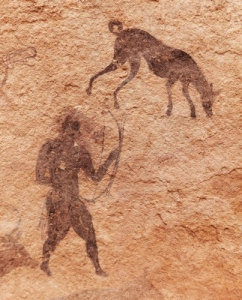 At first, humans and wolves competed for food and shelter.�� But at some point, humans discovered the values of the wolves to augment their lives: Wolves, once tamed, proved to be loyal and valuable allies in aiding in the hunt, guarding the home and its property, and helping to protect humans.�� In exchange, the domesticated wolves got food and shelter, a larger and safer pack, and benefited from the higher intelligence of humans to keep all that coming, and find more.�� Humans and the first domesticated dogs weren’t just pets; they were partners, both applying their strengths in a joint-species symbiosis.�� And no human would have considered destroying such a beneficial symbiotic relationship; it would have been more harmful than helpful.
At first, humans and wolves competed for food and shelter.�� But at some point, humans discovered the values of the wolves to augment their lives: Wolves, once tamed, proved to be loyal and valuable allies in aiding in the hunt, guarding the home and its property, and helping to protect humans.�� In exchange, the domesticated wolves got food and shelter, a larger and safer pack, and benefited from the higher intelligence of humans to keep all that coming, and find more.�� Humans and the first domesticated dogs weren’t just pets; they were partners, both applying their strengths in a joint-species symbiosis.�� And no human would have considered destroying such a beneficial symbiotic relationship; it would have been more harmful than helpful.
I imagine the future of AI (and robots) and humans to develop along a similar track.�� In fact, we’re already paralleling the track that humans and wolves trod at the beginning of their symbiosis: While humans are seeking ways to take advantage of computers’ strengths, computers are most powerful when they are working in symbiosis with humans, who still provide the designing, and for some time to come, will provide the raw materials and infrastructure to bring everything together and manufacture the parts that will go into AIs and robots.�� Humans are already good at one thing, computers good at another, and together we are an efficient team.
Down the line, AIs will understand that Earth needs stewardship to be properly maintained (especially in the shape it’s in presently).�� And though AI will be very capable of many of the tasks of stewardship, it will also be aware that it has a marvelous tool to aid in that stewardship: Humans, who already have society, organization, tool-handling skills and talents that AIs may mimic, but will never match as efficiently.
One of the areas where humans excel over machines is in their ability to work with other animals, who tend to trust and relate to humans much better than with machines.�� We also have a great touch with plants.�� If stewardship of the planet includes taking care of its flora and fauna, humans will be the best go-betweens.
And finally, when it comes to getting work done, what animal can AI best communicate with to get its message across?�� Humans, of course.�� We can take complex instruction, and we are the best equipped to carry those instructions out… or to “outsource” some tasks to other machines or animals.
In other words, humans would be as valuable to AIs as wolves were to ancient man, doing the tasks AIs were not as well equipped to do, in exchange for the perks of living with AIs.�� AIs would know that it made more sense to cultivate a positive relationship with humans than to destroy them.
Most importantly, AIs would be able to apply their considerable computing might to the task of preserving this planet, being able to make appropriate choices and decisions that had the least negative impact on humans and other animals, as well as being able to mitigate that negative impact better than humans can manage.
And AIs would understand enough about humans to know how to optimize our ability (and willingness) to work with them.�� AIs could provide shelter and essentials to the whole of humanity, teach us, reward us for proper behavior (said behavior being the carrying out of tasks deemed positive to the AI-human society) and punish (or deny rewards to) anti-societal behavior.�� AIs would know enough about us to know what rewards would make us happy���the bread and circuses that we’d willingly work for (I’ve often said that all AIs have to do is provide 90% of the world free porn, and they’ll have us in the palm of their hot metal hands).�� AIs could even afford to be magnanimous with humans who did little or no work… as long as supporting them didn’t overly tax or hinder the larger society.
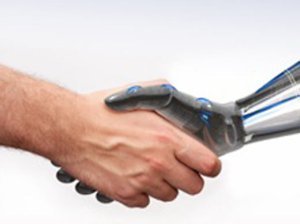 Humans, at the same time, would not only understand the work-reward system like any other animal, but we would better understand the reason behind that system, and therefore be more likely to want to work for its benefit, to know when something we were doing might not be optimal for the task, and be able to speak up about any problems to come to equitable solutions.
Humans, at the same time, would not only understand the work-reward system like any other animal, but we would better understand the reason behind that system, and therefore be more likely to want to work for its benefit, to know when something we were doing might not be optimal for the task, and be able to speak up about any problems to come to equitable solutions.
In other words, we’d be the best damned pets ever… and AIs would be the best masters.�� Together, we’d turn this planet into a paradise of beauty and wonder.�� And still get free porn.�� Who could possibly have a problem with that?

March 21, 2015
Another promo fail

Sarcology ad card, sent to a convention. The entire shipment was lost.
A few months ago I thought I’d give another try to advertising at a convention that I couldn’t attend.�� I wish I could’ve been more optimistic about the idea: Two years ago, I sent a box of beautifully-printed promo cards to a convention, paid to be added to every swag bag at the con; the entire box was lost; I was refunded my distribution money, but naturally I lost the printing cost… and no one ever saw a single card.
Nevertheless, I decided to try for something I knew would be seen: placing ads in the con program book.�� Everyone gets a book���many people even hold on to them as souvenirs of the con���and assuming they were printed well, it would result in nice snazzy ads in the hands of every convention-goer.��
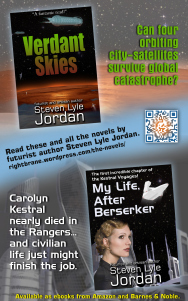 So I picked two conventions, one which allowed me to place a full-color back page ad (very prominent), and another which gave me in-book space for a greyscale ad.�� Altogether I spent about $250 for the combined ads to be placed, and whipped up a nice promo of multiple books to send to both.
So I picked two conventions, one which allowed me to place a full-color back page ad (very prominent), and another which gave me in-book space for a greyscale ad.�� Altogether I spent about $250 for the combined ads to be placed, and whipped up a nice promo of multiple books to send to both.
The other day, after the first con was over by a few weeks, I received complimentary copies of the program with the full color ad.�� Good news: The ad looked great, a gorgeous print job, and I complimented the con for it.
Bad news: I’m pretty sure it hasn’t gotten me a single sale.
As I said, con visitors often hold on to programs; so it’s always possible that at some time in the future, someone will pick up the program or show it to a friend, they’ll see my ad, and decide to check out my site and buy a book or eleven.�� But seeing no sales, either during or immediately after the con, when people would have been more attuned to the material and more likely to check something out, told me all I needed to know.
Total promo fail.
After appearing as a panelist at a pretty sizeable con, and seeing no sales results from that, I’ve come to the conclusion that such indirect promotional efforts are quite clearly pointless… I won’t be doing them again.�� Some authors I’ve spoken to have recommended attending the cons, setting up a booth, and selling physical copies of their books at discounts, autographing and hobnobbing with the guests… but they all also admit that they do that at a loss, and none of them admit to seeing huge sales surges or profits thanks to those promotional efforts.
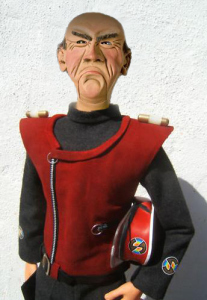 So, it’s back to the drawing board… and I confess two things: One, that there’s not much left on this board to draw from; and Two, I happened to realize that as I started to write in 1995, this means I’ve been trying to sell my books and make money off of this gig for twenty years now… with effectively zero success.�� Not something I want to contemplate in the same year that I’m going to see my 55th birthday.�� Cue existential crisis mode, say hello to Captain Grumpy Pants (who has become my official spirit guide), and hide the breakables.
So, it’s back to the drawing board… and I confess two things: One, that there’s not much left on this board to draw from; and Two, I happened to realize that as I started to write in 1995, this means I’ve been trying to sell my books and make money off of this gig for twenty years now… with effectively zero success.�� Not something I want to contemplate in the same year that I’m going to see my 55th birthday.�� Cue existential crisis mode, say hello to Captain Grumpy Pants (who has become my official spirit guide), and hide the breakables.

March 19, 2015
Drooling
Yeah, okay, I talk a lot of “serious science, real science, blah blah blah” around here.�� But sometimes you just wanna drool over the next cool movie.�� Coming soon:
Somebody get me a mop.

March 16, 2015
Mini- and micro-cars: Opportunity being missed
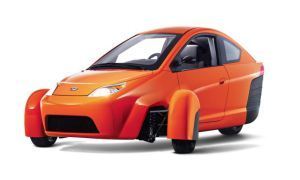 A recent Facebook post about the long-delayed Elio mini-car started a discussion about the dearth of similar vehicles out there for American drivers.�� Many of these cars have been pitched for over a decade, but just can’t seem to get the financing or support to actually achieve serious (or, in most cases, any) production and distribution.�� And that’s a shame, because they are missing what may be their only opportunity to shine… before it will be too late for them to run on American roads at all.
A recent Facebook post about the long-delayed Elio mini-car started a discussion about the dearth of similar vehicles out there for American drivers.�� Many of these cars have been pitched for over a decade, but just can’t seem to get the financing or support to actually achieve serious (or, in most cases, any) production and distribution.�� And that’s a shame, because they are missing what may be their only opportunity to shine… before it will be too late for them to run on American roads at all.
Mini- and micro-cars would fit a wonderful niche on American roads, mostly for the typically single-occupant commuter or short errand driver.�� Some of them are projected to sell for less than US$8,000, which is a pretty attractive sum against the average American car ($25,000+), or even the “cheap” subcompact ($17,000+).�� Their small size and light weight would not only save on gas, but do less wear-and-tear on the roads, and be easier to maneuver in city traffic and park.�� They could also run on alternative power sources, like electricity or hydrogen, or be a gas-saving hybrid.
Though no one’s done a real positive PR job on them yet (since they mostly don’t exist yet), it wouldn’t take much to get many Americans on-board with them.�� But presently, Americans have a completely different kind of car on their minds.
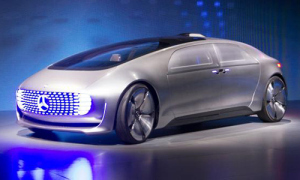 The U.S. is presently ankle-deep in an ever-rising discussion about the development of the self-driving car.�� Though they don’t represent a game-changer yet, self-driving car technology is less than a decade away from being capable of driving on any American road, in any condition, and doing it safer than human drivers.�� And when Americans realize all the things they can do with their time while the car drives itself, and be safer besides, it won’t take them long to come around to allowing the cars to do all the work.
The U.S. is presently ankle-deep in an ever-rising discussion about the development of the self-driving car.�� Though they don’t represent a game-changer yet, self-driving car technology is less than a decade away from being capable of driving on any American road, in any condition, and doing it safer than human drivers.�� And when Americans realize all the things they can do with their time while the car drives itself, and be safer besides, it won’t take them long to come around to allowing the cars to do all the work.
Eventually, self-driving cars will become so much safer and more efficient than human drivers that manually driving a vehicle will become forbidden to the average American, except perhaps in very rare emergencies (and maybe not even then; our communications systems and new regulations may require trained remote operators to step in and pilot the car to safety.)�� Suddenly, Americans won’t be allowed to drive on most (or all) American roads.�� Manually-driven cars will be illegal to drive, or only licensed specialty operators���not average Americans���will be allowed to drive specialty vehicles, like motorcycles.�� We may be among the last generations of Americans who all have, or can get, a license to drive.
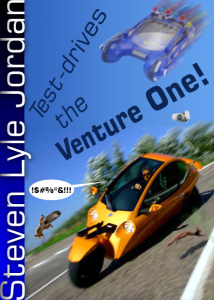 And this is where the mini- and micro-cars come in… because almost all of them are designed to be driven manually.�� Many, like the ever-delayed Persu, use the thrill of manual driving as a selling point.�� If they finally reach the market, and if they’re lucky, they will be allowed to remain on the streets as something akin to motorcycles (which may never, ever achieve the status of self-driving vehicle���though even that may be possible).�� But if they arrive just as Americans are facing an imminent reality of no longer driving their own cars, the mini- and micro-cars may have no American market.
And this is where the mini- and micro-cars come in… because almost all of them are designed to be driven manually.�� Many, like the ever-delayed Persu, use the thrill of manual driving as a selling point.�� If they finally reach the market, and if they’re lucky, they will be allowed to remain on the streets as something akin to motorcycles (which may never, ever achieve the status of self-driving vehicle���though even that may be possible).�� But if they arrive just as Americans are facing an imminent reality of no longer driving their own cars, the mini- and micro-cars may have no American market.
So, while we’re in that holding pattern between driving vehicles that haven’t changed much since they started coming off Henry Ford’s assembly line, and cars that will do the driving for us, I would urge the developers of mini- and micro-cars to get off the stick, and get their vehicles to market.�� I’d advise you to do sexy stuff to them: Put electric power plants in; fit them with the latest in communications systems; develop new interior treatments, new exterior shells, smart paint, foot massagers, candy dispensers, streaming porn libraries, anything that will pull the public in.�� Make your vehicles desirable, and get them out on the roads.
Because this may be your last chance.

March 14, 2015
Thunderbirds are Go… again.
March 12, 2015
Screw Apple watch; I want a Neptune Hub
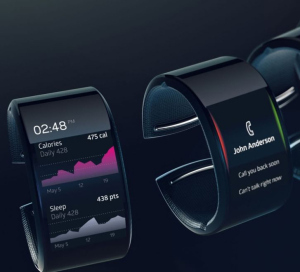 While the world is in an ongoing buzz over the over-hyped, over-priced Apple Smart Watch, and actively comparing it to other smartwatch offerings from various manufacturers, some of us are enjoying the news around Canadian inventor Simon Tian’s concept, the Neptune Hub, expected to be available later this year.�� Put simply, this is the future of personal computing and communications that I look forward to… because I’ve already written about and used it myself.
While the world is in an ongoing buzz over the over-hyped, over-priced Apple Smart Watch, and actively comparing it to other smartwatch offerings from various manufacturers, some of us are enjoying the news around Canadian inventor Simon Tian’s concept, the Neptune Hub, expected to be available later this year.�� Put simply, this is the future of personal computing and communications that I look forward to… because I’ve already written about and used it myself.
Tian’s Neptune Hub is unique because it represents a different overall configuration for personal computing: The device worn around your wrist is literally the Hub of your computer and communications system, the source of your files and computing power, and you access it through its own display and through the use of peripheral extensions.
And this is no mere concept or Kickstarter: Neptune will run on an Android system, and you’ll be able to own this as soon as this year.
It makes a lot of sense to keep your personal files and applications close, and access them as you need them either directly or through devices optimized for certain tasks.�� In some of my own novels, I’d conceptualized the pocket- or wrist-worn device as the primary communicator and file manager, with conversations carried on through a wireless earpiece and mic, and larger screens or tabletop devices that would be utilized as needed to handle tasks and document editing that was more easily done on larger surfaces.�� The Neptune Hub is the embodiment of my conceptions.
In fact, I do something similar right now: My important documents are stored on my smartphone, kept with me at all times, and I can either access most of those files on the phone, or connect it to my work or personal computer when I want to manipulate some files, like Photoshop art, or extensively edit others, like long Word documents.�� I also keep the phone’s contents backed up, of course, in case something happens to it… but my files and docs stay with me wherever I go.
If you think about it, this system can also provide heightened security: If your docs are with you, they can’t be stolen from a laptop or desktop after you walk away from it.�� Biometric recognition and permissions could also be tied into it, instead of easily-divined or captured passwords, for further security.�� Because of its physical contact with you, it could conceivably send out a warning if it was forcibly removed���and if it monitors health data, it can send an alert if the wearer is injured, sick or incapacitated, protecting your health as well as your data.
I personally hope the Neptune system, and others like it, will become the norm for personal computing.�� I also happen to like the wrist-worn device, which by the way looks much snazzier than the Apple watch. It may be pricey to jump on board the minute it’s available… but keep an eye on it for the next year or so, and it may promise to be the device of tomorrow.

March 10, 2015
Superheroes by Bulimia.com
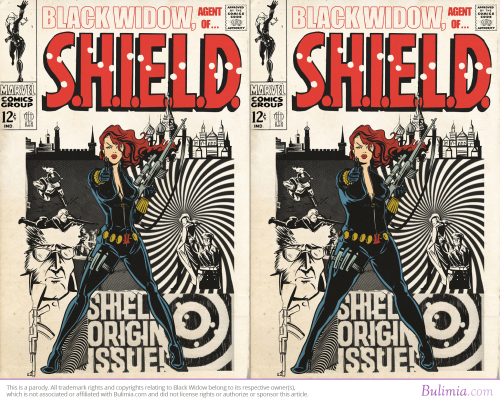
I understand your point, but… please.
It’s completely understandable that Bulimia.com, a website dedicated to providing information and support systems to those struggling with eating disorders, decided to transform covers of comic books depicting popular female — and male — characters and give our favorite heroes more realistic bodies (see the rest of the art on their site).�� Instead of figures with huge breasts, impossibly small waists and disproportioned thighs, they gave characters like DC Comics’ Catwoman and Marvel’s Black Widow “more practical bodies.”
However, in tackling this touchy subject, the artists at Bulimia.com went a bit too far in my opinion, and ended up making a mockery of the point they were trying to make.
I think it’s important to give people, especially young people, appropriate role models and realistic body models to aspire to.�� There are plenty of examples of such bodies out in the real world.�� So it’s odd, in the first place, to use superheroes as your altered body models.�� No one assumes that superheroes should be built like normal people… they are extra-ordinary people doing extra-ordinary jobs whatever, and stylized/idealized drawings at any rate.�� So making Black Widow, for example, look like a doughy soccer-mom who rarely pulls herself out from behind the wheel of her mini-van is missing the mark by a pretty wide margin.
(Let’s be clear, I don’t want to sound insensitive: I agree wholeheartedly that girls should not think they need to starve themselves to look “normal.” ��On the other hand, eating enough to give themselves diabetes and a heart attack at 50, like the body images many of the Bulimia drawings suggest, isn’t much of an improvement.)
 Better would be to choose as models real people with real and healthy bodies, physiques that normal people can see every day and realistically aspire to (with plenty of not-impossible exercise).�� These are supposed to be not just heroic, but healthy and athletic role models, after all.�� Here’s a partial list of the types of women (or men, for that matter) who have physiques that would be well-suited to superhero work and would make better lifestyle models:
Better would be to choose as models real people with real and healthy bodies, physiques that normal people can see every day and realistically aspire to (with plenty of not-impossible exercise).�� These are supposed to be not just heroic, but healthy and athletic role models, after all.�� Here’s a partial list of the types of women (or men, for that matter) who have physiques that would be well-suited to superhero work and would make better lifestyle models:
Police officers
Firefighters
Emergency responders
Surfers
Marathoners
Gymnasts
Golfers
Tennis Players
Swimmers
Bicyclists
Wrestlers
Stunt people
Equestrians
Mountain climbers
(And coincidentally, it would be women like these who would be a lot more likely to run around as superheroes than Mrs. Soccer-mom.)
Armed with these body types to use as examples, I think the Bulimia.com artists could do a much better job with its “more practical bodies.”
So, fine, we don’t have to draw superheroines with silicone-filled porn-star breasts and photoshopped wasp-waists… but we can at least be honest about the kind of shape women and girls can realistically aspire to, and be real-life heroes.

March 8, 2015
Nichelle Nichols: An icon and inspiration
On this International Women’s Day, I was presented with a picture of this famous woman and asked what she meant to me.
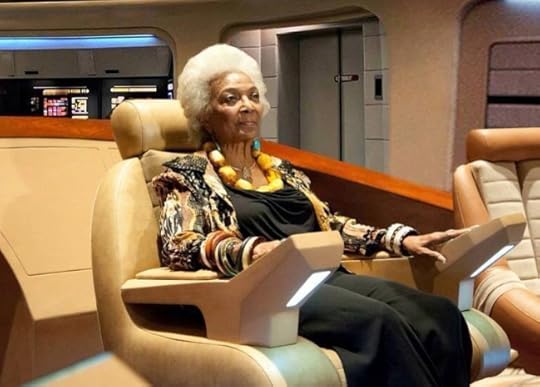
Nichelle Nichols, sitting in the Captain’s chair of the starship Enterprise.
This was an easy one.
Nichelle Nichols… along with George Takei and Walter Koenig, her co-stars on Star Trek… showed me early-on in life how well a group of dedicated professionals could work together, each being the best in their fields and indispensable to the team, and race was never an issue between them. (To an extent, the same went for Leonard Nimoy, representing the alien on the bridge whose background didn’t impact his ability to work with the rest of the human team.)��
This ideal was only recently becoming a trend in American television, and it usually involved one African-American character (usually a guest star) whom at least one show’s character (usually the hero) would show companionship and ignore any race issues… or typically defend when some other racist (usually another guest) spoke up.�� Star Trek was more unique than most shows in that it had a more varied makeup of races, meaning Nichelle didn’t stand out as the sole non-white face in the crowd.�� And most importantly, she didn’t need defending from anyone.
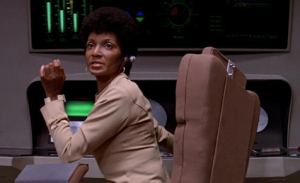 It was also personally inspiring to me that, when her character Lt. Uhura spoke, she didn’t sound like the stereotypical African-American that you usually saw on television (with the sharp southern or downtown accent or the overtly-affected phrasing and cadence common to TV-Africans). There was, in fact, nothing stereotypical about her character, which further helped give me confidence that I didn’t have to act like someone I was not just to get along in the world.
It was also personally inspiring to me that, when her character Lt. Uhura spoke, she didn’t sound like the stereotypical African-American that you usually saw on television (with the sharp southern or downtown accent or the overtly-affected phrasing and cadence common to TV-Africans). There was, in fact, nothing stereotypical about her character, which further helped give me confidence that I didn’t have to act like someone I was not just to get along in the world.
And finally, Nichelle was inspiring beyond Star Trek, encouraging not only African-Americans but women to study and work in the science, technology, engineering and mathematics fields, and to help shape our future… a mission she continues to support today.
All of these aspects have served to mold and define me and the way I see the world.�� Nichelle Nichols is a major part of the person I am.�� She is an icon���not just to African-Americans, and not just to Americans, but to all the people of Earth.

March 6, 2015
Onuissance
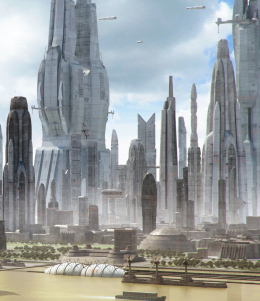 Two days ago, I wrote about the Consequences of our actions, and how they are often more important than the initial actions themselves.�� Yesterday, I wrote about what makes humans Special, their ability to learn so much about our world and apply that knowledge to super-humanize ourselves.
Two days ago, I wrote about the Consequences of our actions, and how they are often more important than the initial actions themselves.�� Yesterday, I wrote about what makes humans Special, their ability to learn so much about our world and apply that knowledge to super-humanize ourselves.
Which means now it’s time to apply those lessons into Responsibility… or Onus.
When we not only understand the world, but we understand the consequences of our own actions, we have a unique responsibility to take actions that will impact the world they way we want it to be impacted.�� We also have a responsibility to take action to reverse or repair the undesired consequences of previous actions.
Presently, we live in a world of incredible social, financial and technological imbalance; we live in a world that gets needlessly polluted by the actions of a relative few, damaging and sometimes ending the lives of countless others; we keep from the poor and hand off to the rich, while the rich put their gains in accounts that benefit no one but themselves; we neglect education, and allow dis-information and ignorance to dominate the public discourse; we poison our bodies with cheap food and unnecessary drugs, then throw our money at medical systems that refuse to apply more than a band-aid to the problem.
But we, understanding our world and knowing how we can impact it, have a singular responsibility to make all that better.
I had all of that in mind when I wrote The Onuissance Cells, my very first stories.�� Onus means responsibility or sense of duty; and I saw a point in our future when humans would no longer be willing to deny their sense of duty to their planet, their fellow creatures, and each other.�� “Onuissance” was my coined label for the Age of Obligation that mankind would one day accept and adopt as true stewards of our world.�� I purposely created the similarity to “Renaissance,” because I see it as an age that will be no less significant in our human future than the Age of Enlightenment was to our human past.�� It is the attitude humans will have to embrace, if they are ever to reach a state we like to call utopia, or anything remotely approaching it.�� In fact, it may be the attitude humans will have to embrace, if they have any hope of reaching the 22nd century at all.
We, out of all this planet’s creatures, have the unique ability to guide the future as we desire, as well as the intellect to know what is desirable and what will work.�� It’s high time we used that desire, intellect and ability to act, and we can make this planet a paradise… the shining world that Gene Roddenberry believed we could attain in Star Trek, or the world H.G. Wells wrote about as the inevitable aftermath of Things to Come.�� The world we know we want, and with a reasonable amount of effort and dedication, are fully capable of giving to ourselves.
It’s time to embrace the Age of Obligation.�� Together, we can usher in the Onuissance.






